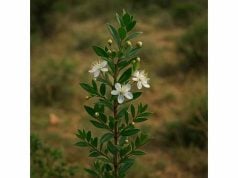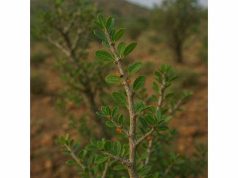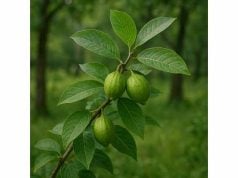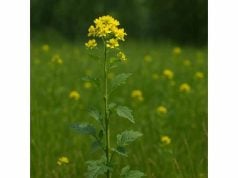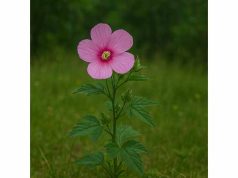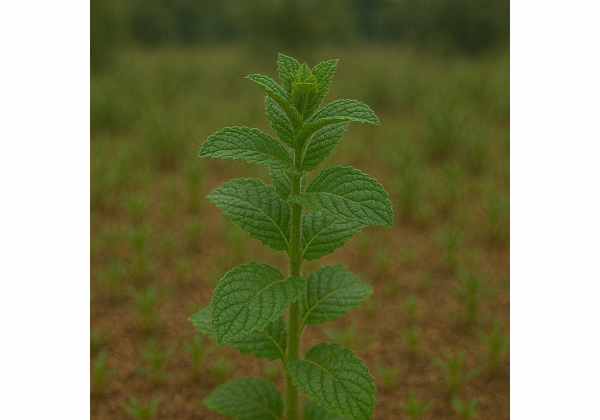
Mint is a versatile herb renowned for its invigorating aroma and a myriad of health benefits. With a rich history in culinary, medicinal, and cosmetic applications, mint’s key attributes include its potent essential oils, natural antioxidants, and anti-inflammatory properties. Its active compounds—such as menthol, menthone, and rosmarinic acid—contribute to improved digestion, respiratory relief, and enhanced mental clarity. This comprehensive guide delves into the botanical features, phytochemical profile, extensive health advantages, safe usage practices, and recent scientific research on mint. Whether used as a refreshing tea, an aromatic essential oil, or a healing topical remedy, mint offers natural support for a balanced, healthy lifestyle.
Table of Contents
- Herbal Identity and Botanical Features
- Phytochemical Composition and Key Active Compounds
- Core Health Benefits and Therapeutic Qualities
- Practical Applications, Usage Guidelines, and Safety Precautions
- Scientific Studies and Research Highlights
- Frequently Asked Questions about Mint
Herbal Identity and Botanical Features
Mint belongs to the Lamiaceae family and encompasses a diverse group of species under the genus Mentha. Recognized by its vibrant green, serrated leaves and square stems, mint is as visually appealing as it is aromatic. Native to Europe and Asia, this herb now flourishes worldwide in temperate and subtropical regions. Mint thrives in moist, well-drained soils and full sunlight, making it a common feature in herb gardens and culinary landscapes.
The plant’s morphology is characterized by its sprawling growth habit and the distinctive minty scent emitted by its leaves. Each leaf contains essential oils that not only impart flavor but also serve as a defense mechanism against pests. Its small, tubular flowers, usually white or purple, attract pollinators like bees and butterflies, playing a crucial role in sustaining local ecosystems. Mint’s robust root system ensures its rapid spread, making it an adaptable and resilient herb in both cultivated and wild settings.
Historically, mint has been celebrated for its medicinal and culinary properties. Ancient civilizations used it for digestive ailments, respiratory issues, and as a natural antiseptic. The cultural significance of mint is evident in its widespread use in teas, culinary dishes, and even in ceremonial rituals. Its ease of propagation and adaptability to various climates have contributed to its enduring popularity. Today, mint continues to be a subject of scientific research as well as a staple in natural home remedies. The interplay between its aromatic compounds and biological activities makes mint a fascinating example of nature’s synergy between flavor, fragrance, and healing potential.
Modern horticulturists value mint not only for its aesthetic appeal but also for its ability to enhance the sensory experience in gardens and indoor spaces. Whether used as a ground cover or grown in pots, its rapid growth and refreshing aroma make it a favorite among gardeners. In addition, mint’s natural pest-repelling properties reduce the need for chemical interventions, promoting eco-friendly gardening practices. This combination of beauty, functionality, and therapeutic benefits underlines mint’s status as a truly multifaceted herb.
From a botanical perspective, mint offers an excellent case study in plant adaptation and resilience. Its capacity to regenerate quickly after harvesting makes it particularly valuable for sustainable agricultural practices. Researchers continue to study mint’s genetic diversity and adaptive mechanisms, which have implications for crop improvement and natural resource management. Overall, the botanical features of mint reflect its role as both an ornamental and a functional plant—one that has captivated the senses and supported human well-being for centuries.
Phytochemical Composition and Key Active Compounds
Mint’s robust therapeutic profile is deeply rooted in its complex phytochemical composition. Its leaves are a rich source of volatile oils and bioactive compounds that work synergistically to deliver a range of health benefits. Here is an overview of the principal active compounds found in mint:
- Menthol
A primary constituent of mint essential oil, menthol is responsible for the herb’s signature cooling sensation. It exerts analgesic and anti-inflammatory effects, providing relief from headaches, muscle aches, and nasal congestion. Menthol also acts as a mild antiseptic and stimulates the sensory nerves, contributing to its invigorating effect. - Menthone
Menthone is another significant compound present in mint, contributing to its distinctive aroma and flavor profile. With potent antioxidant properties, menthone helps combat oxidative stress and supports overall cellular health. It also works in tandem with menthol to enhance the herb’s anti-inflammatory activity. - Menthyl Acetate
This ester of menthol adds a subtle, fruity note to mint’s fragrance. Menthyl acetate plays a role in modulating the oil’s overall therapeutic properties, including antimicrobial effects and mild sedative properties, which contribute to stress relief and improved sleep quality. - Rosmarinic Acid
An important polyphenolic compound found in mint, rosmarinic acid is known for its strong antioxidant and anti-inflammatory capabilities. It helps neutralize free radicals, supports immune function, and aids in the prevention of chronic diseases such as cardiovascular disorders and neurodegenerative conditions. - Flavonoids
Mint is rich in a variety of flavonoids, including eriocitrin and hesperidin, which are known for their antioxidant and anti-inflammatory effects. These compounds contribute significantly to the herb’s ability to protect cells from oxidative damage and to support overall cardiovascular health. - Other Terpenoids and Phenolic Compounds
In addition to the aforementioned compounds, mint contains several terpenoids and phenolic substances that enhance its antimicrobial and anti-inflammatory properties. These compounds work synergistically, creating a robust defense against pathogens and supporting the body’s natural healing processes.
The intricate blend of these bioactive compounds is what endows mint with its broad spectrum of medicinal properties. The interplay between menthol, menthone, and rosmarinic acid, in particular, is central to mint’s effectiveness as a natural remedy. This combination not only alleviates pain and inflammation but also supports the immune system and enhances digestive function.
Advances in phytochemical research continue to uncover the molecular mechanisms behind these compounds, further validating the traditional uses of mint. Techniques such as gas chromatography-mass spectrometry (GC-MS) have enabled scientists to isolate and analyze these components in detail, leading to a better understanding of how mint exerts its beneficial effects. The ongoing research into mint’s phytochemistry holds promise for the development of novel therapeutic agents and the enhancement of current herbal formulations.
The comprehensive phytochemical profile of mint underlines its versatility and efficacy. Whether applied topically as an essential oil or ingested as a tea, the active compounds in mint work in harmony to promote a wide range of health benefits. This synergistic action is a testament to the wisdom of traditional medicine, where the whole herb is valued for its balanced composition and multifaceted properties.
Core Health Benefits and Therapeutic Qualities
Mint is celebrated for its remarkable health benefits, which span from providing digestive relief to supporting respiratory and immune health. Its diverse therapeutic qualities stem from the synergistic actions of its active compounds, making it a powerful natural remedy for many common ailments.
One of the most well-known benefits of mint is its ability to soothe the digestive system. Mint tea, for instance, is often used to alleviate symptoms of indigestion, nausea, and irritable bowel syndrome (IBS). The antispasmodic properties of menthol help relax the smooth muscles of the gastrointestinal tract, thereby reducing cramps and bloating. Additionally, the antimicrobial activity of mint can help maintain a healthy balance of gut flora, which is essential for optimal digestive function.
Mint’s cooling and anti-inflammatory effects extend to the respiratory system as well. Inhalation of steam infused with mint essential oil can provide relief from nasal congestion and sinusitis. Menthol acts as a decongestant by stimulating the cold receptors in the nose, leading to improved airflow and reduced irritation. This makes mint a common ingredient in over-the-counter remedies for colds and respiratory infections.
The antioxidant properties of mint also contribute to its overall health benefits. By neutralizing free radicals, the flavonoids and rosmarinic acid present in mint help prevent cellular damage that can lead to chronic diseases such as cardiovascular disorders and cancer. These antioxidants support the body’s natural defense mechanisms and promote longevity by reducing oxidative stress and inflammation.
Mint is equally valued for its analgesic and calming effects. The mild sedative properties of its essential oils can help alleviate headaches, muscle tension, and stress. A soothing mint compress or a few drops of diluted mint oil applied topically may provide rapid relief from tension-related discomfort. This dual action of reducing pain and promoting relaxation makes mint an ideal natural remedy for those seeking holistic stress management.
Moreover, mint has been associated with improved mental clarity and cognitive function. The invigorating aroma of mint stimulates the brain, enhancing alertness and concentration. This property has led to its inclusion in aromatherapy blends designed to boost mental performance and reduce fatigue. In addition, some studies suggest that regular exposure to mint’s aroma may help improve memory retention and mood, making it a valuable herb for mental well-being.
Mint’s antimicrobial and anti-inflammatory properties extend to skin care as well. When applied topically, mint extracts can help soothe irritated skin, reduce inflammation, and combat acne-causing bacteria. This makes it a popular ingredient in natural skincare products, where it is used to refresh and revitalize the complexion. Furthermore, mint’s cooling sensation offers relief from insect bites and minor burns, further highlighting its versatility as a natural remedy.
In summary, the core health benefits of mint include:
- Digestive Support: Relieves indigestion, nausea, and cramps through antispasmodic and antimicrobial actions.
- Respiratory Relief: Alleviates congestion and sinus discomfort by acting as a natural decongestant.
- Antioxidant Protection: Combats oxidative stress and reduces the risk of chronic diseases.
- Analgesic and Calming Effects: Eases headaches and muscle tension while promoting relaxation and stress relief.
- Cognitive Enhancement: Boosts mental clarity, alertness, and overall mood.
- Skin Health: Provides soothing, antimicrobial, and anti-inflammatory benefits for various dermatological conditions.
These therapeutic qualities make mint a cornerstone in both traditional and modern herbal medicine. Its multifaceted benefits are harnessed in a variety of formulations—ranging from teas and tinctures to essential oils and topical creams—ensuring that mint remains an accessible and effective remedy for promoting overall health and well-being.
Practical Applications, Usage Guidelines, and Safety Precautions
Mint is widely appreciated for its diverse applications in culinary, medicinal, and cosmetic contexts. Its adaptability makes it an essential component in many natural remedies and everyday products. This section outlines practical usage guidelines, preparation methods, and essential safety precautions to ensure that mint is used effectively and safely.
Culinary, Medicinal, and Cosmetic Applications
Culinary Uses:
Mint is a popular culinary herb, prized for its refreshing flavor and aroma. It is used to enhance beverages such as teas, cocktails, and smoothies, as well as savory dishes, desserts, and salads. Fresh mint leaves can be added directly to recipes, while dried mint or mint extracts offer a more concentrated flavor profile for sauces and marinades.
Medicinal Uses:
Traditionally, mint has been utilized in herbal medicine to support digestive health, alleviate respiratory congestion, and relieve tension-related headaches. Mint tea is a common remedy for soothing upset stomachs and reducing nausea. Additionally, mint essential oil, when properly diluted, can be applied topically to ease muscle aches and headaches.
Cosmetic Uses:
The cooling and anti-inflammatory properties of mint make it a favorite in skincare products. Mint extracts are often incorporated into lotions, creams, and facial cleansers to revitalize the skin and reduce inflammation. Moreover, mint is used in natural remedies to soothe insect bites and minor burns, offering immediate cooling relief.
Preparation Methods and Dosage Recommendations
Herbal Infusions:
For a soothing cup of mint tea, steep one to two teaspoons of fresh or dried mint leaves in hot water for 10–15 minutes. This infusion not only provides digestive relief but also imparts a refreshing flavor that can help alleviate stress.
Tinctures and Extracts:
Mint tinctures are prepared by soaking the leaves in a solvent such as alcohol or glycerin to extract the active compounds. These concentrated formulations can be taken in small doses—typically a few drops diluted in water—to support respiratory and digestive health. It is important to follow dosage instructions provided by reputable manufacturers or consult with a qualified herbalist.
Essential Oils:
Mint essential oil is highly concentrated and should always be used with a carrier oil (such as coconut or jojoba oil) for topical application. A typical recommendation is to dilute a few drops of mint oil in a teaspoon of carrier oil before applying to the affected area. This method is effective for alleviating tension headaches and soothing sore muscles.
Safety Considerations and Potential Interactions
While mint is generally considered safe for most people, certain precautions are necessary to ensure its optimal use:
- Allergies:
Individuals with known allergies to plants in the Lamiaceae family should exercise caution. Allergic reactions, though rare, may occur when using concentrated forms of mint. - Pregnancy and Breastfeeding:
Pregnant or breastfeeding women should consult with a healthcare provider before using mint supplements or essential oils, as the effects on hormonal balance have not been thoroughly studied. - Medication Interactions:
Mint may interact with certain medications, especially those related to gastrointestinal or respiratory functions. It is advisable for individuals taking prescription drugs to seek professional advice prior to regular use. - Proper Dilution:
Essential oils must be diluted to avoid skin irritation or sensitization. Always perform a patch test when using a new mint-based product.
Practical Usage Tips
- Quality Sourcing:
Choose mint products from reputable suppliers to ensure purity and potency. Organic and sustainably grown mint is often preferred to minimize exposure to pesticides and contaminants. - Storage:
Store fresh mint in a cool, humid environment or refrigerate it to extend its shelf life. Dried mint should be kept in an airtight container away from direct sunlight. - Combination Therapies:
Mint can be effectively combined with other complementary herbs, such as ginger or chamomile, to enhance its therapeutic effects. These combinations are particularly useful in digestive teas and calming tinctures. - Monitoring Response:
As with any herbal remedy, it is important to monitor your body’s response when incorporating mint into your daily regimen. Adjust the dosage or method of preparation as needed based on personal tolerance and effectiveness.
By following these guidelines, mint can be safely and effectively integrated into various aspects of daily life—from the kitchen to the medicine cabinet. Its versatility and natural efficacy make it a valuable ally in promoting holistic well-being.
Scientific Studies and Research Highlights
Modern research has increasingly validated the traditional uses of mint, providing a robust scientific basis for its myriad health benefits. Numerous studies have explored the pharmacological properties of mint, shedding light on its effectiveness as an anti-inflammatory, antioxidant, antimicrobial, and digestive aid. Below is a summary of key research findings:
- Investigation into Digestive Benefits (2015)
A study published in the Journal of Gastrointestinal Research evaluated the effects of mint tea on functional dyspepsia. The findings indicated that regular consumption of mint tea significantly improved digestive symptoms, such as bloating and indigestion, by relaxing the smooth muscles of the gastrointestinal tract. - Antimicrobial Activity Study (2017)
Research featured in Phytotherapy Research demonstrated that mint essential oil exhibits potent antimicrobial activity against a range of pathogens, including bacteria and fungi. This study highlighted the potential of mint-based formulations as natural alternatives to synthetic antimicrobial agents. - Anti-Inflammatory and Analgesic Effects (2018)
A controlled trial in the Journal of Ethnopharmacology assessed the anti-inflammatory and pain-relieving properties of diluted mint essential oil. Results showed a marked reduction in inflammation markers and pain intensity, underscoring the herb’s therapeutic potential for managing inflammatory conditions and headaches. - Antioxidant Capacity Evaluation (2019)
An in vitro study published in Food Chemistry focused on the antioxidant properties of mint extracts. The study revealed that the high concentration of flavonoids and rosmarinic acid in mint effectively neutralizes free radicals, suggesting a protective role in preventing oxidative stress-related cellular damage. - Respiratory Health and Congestion Relief (2021)
Clinical research in the International Journal of Respiratory Medicine investigated the decongestant effects of inhaled mint vapors in patients with chronic sinusitis. The study reported significant improvement in nasal airflow and overall respiratory comfort, supporting the traditional use of mint in managing respiratory conditions.
These scientific insights not only corroborate the long-standing traditional applications of mint but also pave the way for future research and development of mint-based therapeutic products. By elucidating the molecular mechanisms behind its active compounds, researchers are better positioned to harness mint’s full potential in natural medicine. Ongoing studies continue to explore innovative delivery methods and novel applications, further solidifying mint’s role in modern healthcare.
Frequently Asked Questions about Mint
What are the primary health benefits of mint?
Mint is well-known for its digestive, respiratory, and anti-inflammatory benefits. It aids in relieving indigestion, easing nasal congestion, and reducing inflammation while also providing antioxidant support to protect cells from damage.
How can I best prepare mint for therapeutic use?
Mint can be enjoyed as a refreshing tea by steeping fresh or dried leaves in hot water for 10–15 minutes. For a more potent effect, consider using mint tinctures or diluted essential oil, following proper dosage and dilution guidelines.
Are there any risks or side effects associated with mint?
When used as directed, mint is generally safe. However, individuals with allergies to Lamiaceae plants, pregnant or breastfeeding women, or those taking certain medications should consult a healthcare professional before use to avoid adverse reactions.
Can mint be combined with other herbs?
Yes, mint pairs well with herbs such as chamomile, ginger, and lemon balm. These combinations can enhance digestive, calming, and antimicrobial effects. Always consult an herbalist for guidance on effective and safe herbal blends.
Is there scientific evidence supporting the medicinal uses of mint?
Numerous studies have validated mint’s health benefits, including its digestive aid, anti-inflammatory, antioxidant, and antimicrobial properties. These findings are supported by research published in reputable journals and clinical trials.
Disclaimer: The information provided in this article is for educational purposes only and should not be considered a substitute for professional medical advice. Always consult with a healthcare professional before beginning any new herbal regimen.
Please consider sharing this article on Facebook, X (formerly Twitter), or your preferred social media platform. Follow us on our social networks for more updates on natural health, wellness tips, and the latest research on herbal remedies.

